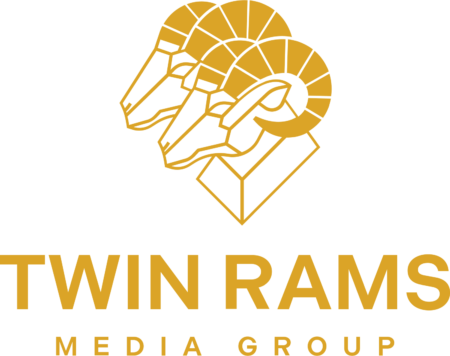As an aspiring writer, you’ve probably already asked yourself: Should I self-publish or traditionally publish? It’s a common question among new writers and definitely an important one. The thing is, there is no straightforward answer to this. You need to carefully assess your work and your determination to publish your book. So, is self-publishing worth it?
What is self-publishing?
Self-publishing is simply the process by which an author independently publishes their work without the involvement of an established traditional publishing company or third-party publisher. This method of publishing allows authors to retain control over various aspects of the publishing process, as opposed to traditional publishing. This includes the content, design, formatting, and distribution.
It should also be noted that self-publishing differs from indie (independent) publishing as well. While self-publishing can be considered an umbrella term for these two, they are not exactly the same. Indie publishing means publishing a book with a smaller or niche publisher, rather than a big, established publishing company or a publishing imprint. With indie publishing, an author still has a lot of control over their process; however, they don’t have to foot the bill and take care of everything. Self-publishing, on the other hand, means that an author is doing every aspect of the publishing process.
Some key aspects of self-publishing a book include:
- Creative control and ownership – Authors maintain full control over their work, including the rights to their content, the design of their book cover, and the layout or formatting of the text in their book.
- Financial responsibility – Self-published authors bear the upfront costs associated with publishing. This includes editing, formatting, cover design, printing (if physical copies are produced), and marketing.
- Distribution – Self-published books can be distributed through various channels. Some of the popular online self-publishing platforms include Amazon Kindle Direct Publishing (KDP), Apple Books, Barnes & Noble Press, Kobo Writing Life, Draft2Digital, and more. Authors can also distribute physical copies through print-on-demand services.
- Marketing and promotion – For self-published books, the marketing and promotion efforts are entirely the author’s responsibility as well. This can include social media promotion, physical book signings, and leveraging personal networks.
- Speed to market – The self-publishing process is often faster than traditional publishing. Authors can publish their work as soon as they are satisfied with the final product, without waiting for any approval from a publisher.
- Quality control – Authors who are self-publishing are responsible for ensuring the quality of their book. This would include thorough editing and professional design to compete with traditionally published books.
- Profit – Authors typically earn a higher percentage of royalties compared to traditional publishing, where the publisher takes a significant cut. In self-publishing, the profit per book sold is higher for the author.
What are the advantages and disadvantages of self-publishing a Book?
Though self-publishing a book has become increasingly popular in recent years—mostly due to the accessibility of digital platforms, the desire for creative freedom, and higher royalty rates—self-publishing has both significant advantages and disadvantages. Aspiring authors should consider these before deciding on the route of self-publishing a book.
Advantages of self-publishing
- Creative control – Authors have complete control over the content, design, and overall presentation of their work. This includes choosing the cover design, formatting, and even the price.
- Higher royalties – Self-published authors typically earn a higher percentage of royalties per book sold compared to traditional publishing. Platforms like Amazon KDP offer up to 70% royalties on eBooks.
- Ownership and rights – Authors retain all rights to their work. This means they can make decisions about reprints, adaptations, translations, and other uses of their content without needing permission from a publisher.
- Flexibility and adaptability – Authors can make changes to their book after it’s been published. This includes updating content, correcting errors, or changing the cover design.
- Niche markets – Self-publishing allows authors to target niche markets that may be overlooked by traditional publishers. Authors can cater to specific audiences without needing to appeal to a broad market.
- Speed – The self-publishing process can be significantly faster. Once the book is ready, authors can publish immediately without waiting for approval from publishers, which can take months or even years.
Disadvantages of self-publishing
- Upfront costs to start – Authors are responsible for any forthcoming costs associated with the publishing process. This includes editing, cover design, formatting, printing, distributing, and marketing. These costs can add up, especially for high-quality services.
- Time and effort – The author must handle all aspects of the publishing process, which can be time-consuming and overwhelming, especially for newbies and aspiring authors. This includes managing production, distribution and shipping, and marketing efforts.
- Quality constraints – Without the backing of a traditional publisher and professional editors, the burden is on the author to ensure the book’s quality. This includes thorough editing, professional formatting, and a compelling cover design to match the book.
- Limitations on marketing and promotion – Self-published authors must handle their own marketing and promotion as well. This, of course, can be challenging without the resources and connections of a traditional publisher. Building an audience as an author and gaining visibility for the book can be difficult.
- Distribution limitations – While self-publishing platforms like Amazon provide broad reach, access to physical bookstores, especially the big ones, can be limited for self published books. Traditional publishers often have established distribution channels that self-published authors lack.
- Managing reputations and perceptions – Despite increasing acceptance, self-published books can still face stigma and may be perceived as lower quality compared to traditionally published books. Overcoming this bias can be challenging.
- Limited access to professional networks – Traditional publishers offer access to professional networks to their authors. This includes experienced editors, marketers, and publicists. Self-published authors need to build these connections on their own, or perform these duties on their own.
In conclusion, self-publishing offers significant advantages in terms of creative control, speed, and profitability. However, it requires considerable effort, investment, responsibility, and a whole lot of determination from the author to self publish a book. Each writer must weigh these various factors and consider their personal goals, resources, and desire to manage and complete the various aspects of publishing independently.
What is the difference between self-publishing and traditional publishing?
Self-publishing and traditional publishing are two popular options for a lot of aspiring authors. It’s normal to take the time yo find out how different or similar they’re going to be. The key differences between self-publishing and traditional publishing revolve around control, financial investment, distribution, and the roles of the author and publisher.
Here’s a quick overview of their differences:
Self-Publishing
Pros: Full creative control, possibility of higher royalties, faster time to market, retention of all rights.
Cons: Higher upfront costs, responsibility for all aspects of publishing and marketing, limited access to physical bookstores, limited networks and connections.
Traditional Publishing
Pros: Professional editing and design services, financial support, established distribution channels, marketing and promotional assistance, higher sales and exposure, accessibility to various platforms, and physical printing.
Cons: Lower royalties, possibility of less creative control, longer time to market, partial transfer of rights to the publisher.
Who usually traditionally publishes books?
It can be hard to get a traditional publishing contract and publish books through well-known publishing companies. However, those who do can reap the benefits of traditional publishing.
Here are a few examples of people who usually publish a book traditionally:
- Known celebrities, actors, and personalities
- Famous athletes
- Famous politicians
- Well-known CEOs and popular business moguls
- Chefs and cookbook writers
- Writers and novelists, especially well-known and established ones
- New and aspiring authors
Who usually self-publishes books?
On the other hand, anyone can choose to self-publish a book. Self-publishing novels and written books can bring a lot of advantages to professionals and aspiring writers. Even established or professional writers can publish their work independently if they feel like they’re getting pushback from the publishing community or they’re truly passionate about a certain project.
Here are a few examples of the types of people who can self-publish a book:
- Entrepreneurs, business owners, or other business professionals
- Consultants
- Financial planners
- Doctors
- Lawyers
- Hobbyists or enthusiasts
- Industry experts
- New or independent writers
- Established authors
- Poets and artists
Can a self-published book be successful?
While there is stigma and negative perception when it comes to self-publishing, a self-published book can be successful. Many authors have achieved success through self-publishing—all in terms of sales, critical acclaim, and even audience support. Some have also found further success after being picked up by a traditional publisher, getting film adaptations, acquiring special edition rights, and more.
Some notable examples of successful self-published authors include Andy Weir with “The Martian”, E.L. James with “Fifty Shades of Grey” trilogy, Rupi Kaur with her New York Times-bestselling poetry collections, and Christopher Paolini with “Eragon” and the rest of the Inheritance Cycle. These authors found their own fanbase and received critical acclaim as self-published authors, before even landing major publishing deals or film options.
Here are some factors that can contribute to the success of your self-published book:
- Overall quality of the book – High-quality writing and plot, thorough editing, professional book formatting, and an attractive cover design are crucial to self-published books. A well-crafted book can compete with traditionally published titles, and help diminish the bad perception of self-published books among audiences.
- Effective marketing – A robust marketing strategy is essential for authors who will be self-publishing. This can include social media promotion, email marketing, book signings, and leveraging book promotion sites. Building a strong online presence and engaging with readers can drive the sales and support that authors need. You can even look for the best digital marketing services to help you promote your book while also helping you with the book formatting and layout.
- Targeting or finding the right audience – Understanding and targeting a specific audience or niche can help a self-published book stand out. This is also important when it comes to marketing the book. It’s best to tailor your marketing efforts to reach the right audience to increase your chances of finding success.
- Positive reviews and word of mouth – Encouraging your readers to leave positive reviews and ratings on platforms like Amazon and Goodreads can boost visibility and credibility. Word of mouth can also significantly impact sales. Leveraging reviews and recommendations on social media sites like Instagram and TikTok can also help boost your self-published book.
- Pricing strategy – Competitive and strategic pricing can attract readers. Offering promotional discounts or free periods can help increase initial visibility and generate interest among the public.
- Consistent publishing schedule – Publishing multiple books or a series can help you build a loyal readership and following. Readers who enjoy one book are likely to purchase other books or the next installments in the series by the same author.
Finding success in self-publishing is definitely achievable. But aspiring authors have to understand that it requires dedication, determination, strategic planning, and a willingness to invest proper time and available resources. With the right combination of quality, marketing, and audience engagement, self-published authors can attain significant success and recognition.
If you think self-publishing a book is the right choice for you, you need to be prepared to do the work, and you need to be determined to see it through.
For help with book formatting, our experts are here to help aspiring writers make their work look professional and high-quality. Contact Twin Rams Media today, and let’s get started on your self-publishing journey!
References:
https://scribemedia.com/self-publishing-vs-traditional/
https://www.forbes.com/sites/forbesbusinesscouncil/2021/05/17/dont-self-publish-a-book-before-answering-these-crucial-questions/?sh=10049541237f


